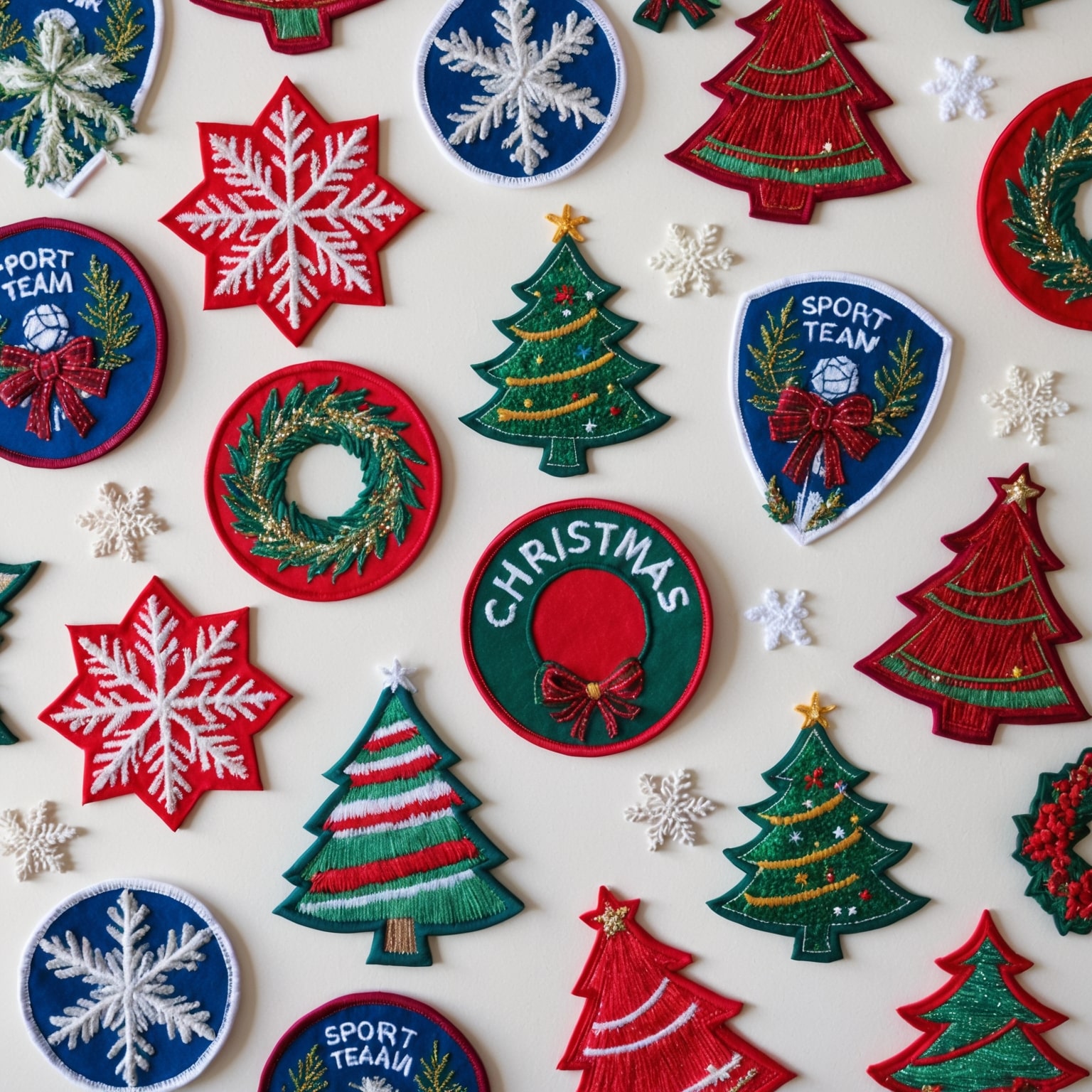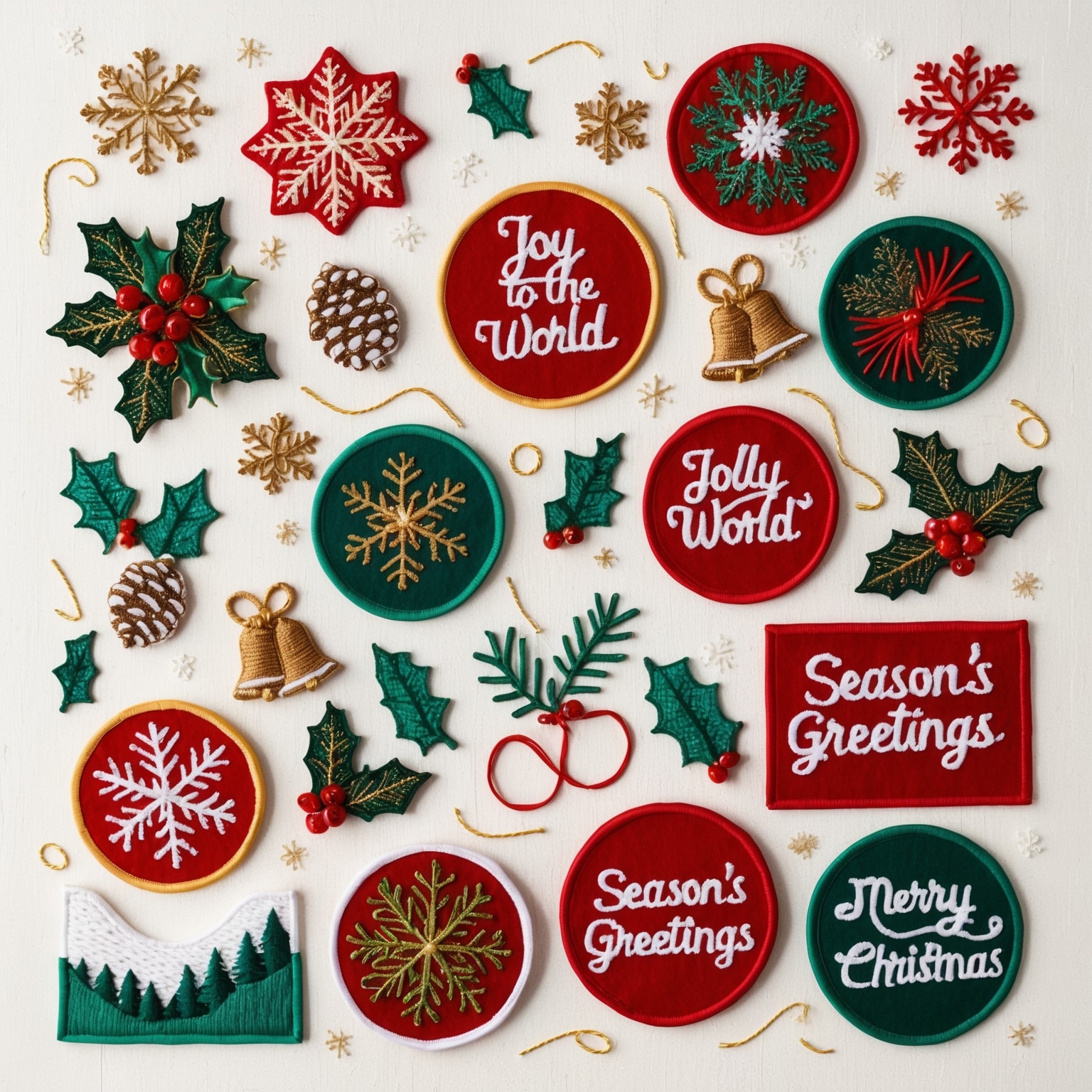Patch design competitions offer an exciting and creative way to engage scouts in activities that foster teamwork, ingenuity, and a sense of pride in their accomplishments. These competitions not only allow scouts to express their artistic talents but also give them an opportunity to contribute to the identity and spirit of their troop or group. The custom patches that result from these competitions become symbols of their shared experiences and achievements, serving as lasting mementos of their scouting journey.
Organizing a patch design competition for scouts requires careful planning and consideration to ensure that the event is both enjoyable and educational. By providing clear guidelines, fostering an inclusive environment, and offering valuable rewards, you can create a competition that boosts creativity, encourages participation, and strengthens the bonds within the scouting community.
In this article, we will explore how to organize engaging patch design competitions for scouts, discussing the benefits, planning steps, judging criteria, and real-world examples. By the end, you will have a comprehensive understanding of how to create a successful competition that inspires scouts to unleash their creativity and contribute to the legacy of their troop or group.
1. The Benefits of Patch Design Competitions for Scouts
Encouraging Creativity and Self-Expression
One of the most significant benefits of patch design competitions is that they encourage creativity and self-expression among scouts. Designing a patch requires participants to think outside the box, experiment with different ideas, and translate their vision into a tangible design. This process allows scouts to explore their artistic abilities, develop their design skills, and express their individuality in a meaningful way.
Creativity is a valuable skill that extends beyond the world of art and design. By participating in a patch design competition, scouts learn to approach problems from different angles, think critically about their ideas, and communicate their concepts effectively. These skills are essential for success in many areas of life, including academics, leadership, and problem-solving.
Fostering Teamwork and Collaboration
Patch design competitions can also serve as an excellent platform for fostering teamwork and collaboration within the scouting community. When scouts work together on a design, they must share ideas, listen to each other’s perspectives, and make collective decisions. This collaborative process helps them develop important interpersonal skills, such as communication, negotiation, and conflict resolution.
Team-based competitions also create a sense of camaraderie and unity among scouts. By working together towards a common goal, scouts build stronger relationships with their peers and develop a deeper sense of belonging within their troop or group. The patch they create becomes a symbol of their teamwork and shared accomplishments, further reinforcing their bonds.
Enhancing Scout Engagement and Participation
Patch design competitions are a fun and interactive way to enhance scout engagement and participation. The opportunity to create a patch that represents their troop, group, or event is a unique and exciting experience for scouts. The prospect of seeing their design come to life as an actual patch motivates scouts to participate actively in the competition.
In addition to boosting engagement, these competitions also provide scouts with a sense of ownership and pride in their work. When scouts see their designs being worn by their peers, they feel a sense of accomplishment and validation for their creative efforts. This positive reinforcement encourages continued participation in scouting activities and strengthens their commitment to the group.
Promoting Scout Pride and Tradition
Custom patches are an integral part of scouting tradition, often symbolizing achievements, milestones, and the values of the troop or group. By organizing a patch design competition, you give scouts the opportunity to contribute to this tradition and leave a lasting impact on their community.
The patches designed by scouts become part of the group’s identity, representing the unique experiences and accomplishments of its members. This connection to tradition fosters a sense of pride in scouts, reminding them that they are part of a larger legacy. As they wear the patches they helped create, scouts are reminded of the importance of upholding the values and principles of scouting.
2. Planning a Successful Patch Design Competition
Defining the Purpose and Scope of the Competition
The first step in organizing a patch design competition for scouts is to define the purpose and scope of the event. Consider what you hope to achieve with the competition and how it aligns with the goals of your troop or group. Are you looking to create a patch for a specific event, such as a campout or jamboree? Or do you want to design a patch that represents the overall identity of the group?
Once you have a clear purpose, determine the scope of the competition. Will it be open to all scouts in the troop or group, or will it be limited to certain age groups or skill levels? Consider whether the competition will be team-based or individual, and decide on the number of designs each participant or team can submit.
Establishing Rules and Guidelines
Clear and well-defined rules are essential for a successful patch design competition. These rules should outline the expectations for participants, the criteria for judging, and any specific requirements for the design. Consider the following elements when establishing the rules:
- Theme: Decide on a theme for the competition that reflects the purpose of the patch. The theme could be related to a specific event, achievement, or value of the troop or group. Providing a theme helps guide the creative process and ensures that the designs align with the goals of the competition.
- Design Specifications: Provide guidelines on the size, shape, and colors of the patch. Specify any required elements, such as the troop’s name, motto, or logo. If there are any restrictions on the use of certain symbols or text, make sure to communicate these clearly to participants.
- Submission Process: Outline the process for submitting designs, including the format (e.g., digital or hand-drawn), the deadline for submissions, and the method of submission (e.g., email, physical drop-off, or online platform). Be sure to give scouts ample time to complete and submit their designs.
- Judging Criteria: Establish the criteria that will be used to evaluate the designs. Consider factors such as creativity, originality, relevance to the theme, and overall design quality. Clearly communicate these criteria to participants so they understand what is expected.
Promoting the Competition and Encouraging Participation
To ensure a successful competition, it’s important to promote the event and encourage participation among scouts. Use a variety of communication channels to spread the word, such as troop meetings, newsletters, social media, and email. Consider creating promotional materials, such as posters or flyers, that highlight the details of the competition and the rewards for participation.
To generate excitement and enthusiasm, consider hosting a kickoff event where scouts can learn more about the competition, ask questions, and start brainstorming ideas. You could also invite past winners or special guests to share their experiences and offer tips for success.
Encouraging participation also means creating an inclusive environment where all scouts feel welcome to contribute, regardless of their artistic abilities. Emphasize that the competition is about creativity and self-expression, and that all ideas are valued. Providing resources, such as design templates, examples of past patches, and access to design tools, can help level the playing field and support scouts in their creative process.
Providing Resources and Support
To help scouts succeed in the competition, consider providing resources and support throughout the design process. Here are some ideas:
- Workshops and Tutorials: Offer workshops or tutorials on design principles, such as color theory, composition, and typography. These sessions can help scouts develop their design skills and gain confidence in their abilities.
- Design Templates: Provide design templates that participants can use as a starting point for their creations. These templates could include basic shapes, borders, and text layouts that scouts can customize with their own ideas.
- Access to Design Tools: If possible, provide access to digital design tools, such as graphic design software or online design platforms. For scouts who prefer to work by hand, offer art supplies such as markers, colored pencils, and paper.
- Mentorship and Feedback: Encourage scouts to seek feedback and guidance from mentors, instructors, or peers during the design process. Constructive feedback can help participants refine their ideas and improve their designs.
Setting Up the Judging Process
The judging process is a crucial aspect of the competition, as it determines which designs will be selected and rewarded. To ensure a fair and transparent process, consider the following steps:
- Assembling a Judging Panel: Select a diverse panel of judges who have experience in design, scouting, or both. The panel could include troop leaders, alumni, design professionals, or community members. Having a variety of perspectives on the panel helps ensure a balanced evaluation of the designs.
- Evaluating the Designs: Use the established judging criteria to evaluate each design. Consider creating a scoring rubric that allows judges to rate each design on different aspects, such as creativity, relevance to the theme, and overall quality. This rubric can help standardize the evaluation process and make it easier to compare designs.
- Announcing the Winners: Once the judging is complete, announce the winners in a way that celebrates their achievements and recognizes the efforts of all participants. Consider hosting an awards ceremony where the winning designs are unveiled, and prizes are distributed. Be sure to acknowledge the hard work and creativity of all participants, even those whose designs were not selected.
Offering Rewards and Recognition
Rewards and recognition are key components of a successful patch design competition. They not only motivate scouts to participate but also provide a sense of accomplishment and pride for those who excel. Consider offering the following types of rewards:
- Custom Patches: The most significant reward for the competition is the production of the winning design as an actual patch. This patch can be distributed to all members of the troop or group, worn proudly on uniforms or gear, and serve as a lasting reminder of the scout’s contribution.
- Certificates and Trophies: In addition to the custom patch, consider awarding certificates or trophies to the top designers. These awards can recognize specific achievements, such as “Best Overall Design,” “Most Creative Design,” or “Best Team Collaboration.”
- Public Recognition: Publicly recognize the winners and participants through troop meetings, newsletters, social media, and the troop’s website. Sharing their achievements with the broader community not only honors their efforts but also inspires others to participate in future competitions.
- Special Opportunities: Consider offering winners special opportunities, such as the chance to work on future design projects for the troop, participate in a design workshop, or attend a scouting event as a guest of honor.
3. Real-World Examples of Successful Patch Design Competitions
Example 1: A Summer Camp Patch Design Competition
A scout troop organized a patch design competition for their annual summer camp, with the goal of creating a patch that would represent the camp’s theme of “Adventure in the Wilderness.” The competition was open to all scouts in the troop, and participants were encouraged to incorporate elements of nature, exploration, and teamwork into their designs.
The winning design featured a silhouette of a mountain range, a compass, and a campfire, symbolizing the spirit of adventure and the outdoor experiences that the camp offered. The patch was produced and distributed to all camp attendees, who proudly wore it on their uniforms and backpacks.
The competition not only generated excitement and participation among the scouts but also strengthened their connection to the summer camp and its traditions. The patch became a cherished memento of their time at camp and a reminder of the friendships and memories they made.
Example 2: A Jamboree Patch Design Competition
A regional scouting organization hosted a patch design competition in preparation for an upcoming jamboree. The competition aimed to create a patch that would represent the spirit of unity and diversity among the scouts attending the event.
Scouts from different troops were invited to participate, and the competition featured both individual and team categories. The judging panel included scout leaders, alumni, and a local graphic designer who provided valuable feedback to the participants.
The winning design depicted a handshake between scouts of different backgrounds, surrounded by symbols representing the various activities and cultures that would be featured at the jamboree. The patch was produced in large quantities and distributed to all jamboree participants, serving as a symbol of the event’s theme and values.
The competition was a resounding success, fostering collaboration and creativity among scouts from different troops. It also generated excitement for the jamboree and helped build a sense of anticipation and pride leading up to the event.
Example 3: A Troop Anniversary Patch Design Competition
In celebration of their troop’s 50th anniversary, a scout troop organized a patch design competition to create a commemorative patch that would honor the troop’s history and achievements. The competition was open to all current scouts and alumni, allowing them to contribute to the troop’s legacy.
The competition received a wide range of submissions, with designs that incorporated elements such as the troop’s founding year, notable achievements, and symbols of the scouting experience. The winning design featured a combination of the troop’s original logo and a modern interpretation of the scouting badge, surrounded by the words “50 Years of Scouting Excellence.”
The commemorative patch was produced and distributed to all current and former members of the troop, who wore it with pride at the anniversary celebration. The competition not only honored the troop’s history but also brought together generations of scouts, reinforcing the sense of tradition and community within the troop.
4. Tips for Ensuring a Successful Patch Design Competition
Encourage Participation at All Skill Levels
To ensure a successful competition, it’s important to encourage participation from scouts of all skill levels. Emphasize that the competition is about creativity and self-expression, rather than technical expertise. Provide resources and support to help scouts develop their ideas and create their designs, regardless of their artistic background.
Consider offering different categories or awards for various age groups or experience levels, allowing younger or less experienced scouts to compete on a level playing field. By creating an inclusive environment, you can ensure that all scouts feel welcome to participate and contribute.
Foster a Positive and Supportive Environment
A positive and supportive environment is key to a successful patch design competition. Encourage scouts to share their ideas, offer feedback to their peers, and celebrate each other’s achievements. Emphasize the importance of teamwork and collaboration, especially if the competition involves group-based submissions.
Avoid creating a highly competitive atmosphere that could discourage participation or lead to negative feelings. Instead, focus on the fun and educational aspects of the competition, and remind scouts that the goal is to enjoy the creative process and contribute to the troop’s identity.
Provide Constructive Feedback and Learning Opportunities
Feedback is an essential part of the learning process in any creative competition. Consider offering constructive feedback to all participants, even those whose designs were not selected as winners. This feedback can help scouts improve their design skills and gain confidence in their abilities.
In addition to feedback, consider offering learning opportunities, such as design workshops or mentoring sessions, where scouts can develop their skills and learn new techniques. These opportunities can be particularly valuable for scouts who are passionate about design and want to continue exploring their creative interests.
Celebrate the Achievements of All Participants
Finally, it’s important to celebrate the achievements of all participants, regardless of the outcome of the competition. Recognize the hard work, creativity, and effort that went into each design, and make sure that all scouts feel valued for their contributions.
Consider hosting an exhibition or showcase where all submitted designs are displayed, allowing participants to share their work with the broader community. This not only honors the efforts of all scouts but also inspires others to participate in future competitions.
Boosting Creativity Through Patch Design Competitions
Patch design competitions offer a unique and engaging way to boost creativity, teamwork, and pride within the scouting community. By organizing a well-planned and inclusive competition, you can inspire scouts to express their artistic talents, collaborate with their peers, and contribute to the identity and legacy of their troop or group.
The custom patches that result from these competitions become powerful symbols of the scouts’ shared experiences and achievements, serving as lasting reminders of their journey and the values of scouting. Whether used to commemorate a special event, celebrate a milestone, or promote the spirit of the troop, these patches are tangible representations of the creativity and dedication of the scouts who designed them.
For scout leaders and organizers, the process of planning and executing a patch design competition is an opportunity to foster a positive and supportive environment where scouts can thrive. By providing clear guidelines, resources, and recognition, you can create a competition that not only boosts creativity but also strengthens the bonds within the scouting community.
With careful planning and thoughtful execution, patch design competitions can become a beloved tradition that inspires scouts to continue exploring their creative potential and contributing to the rich heritage of scouting.
If you are interested in purchasing high-quality custom patches, feel free to call us at 1-877-503-8485 or fill out one of our FREE quotes here.




